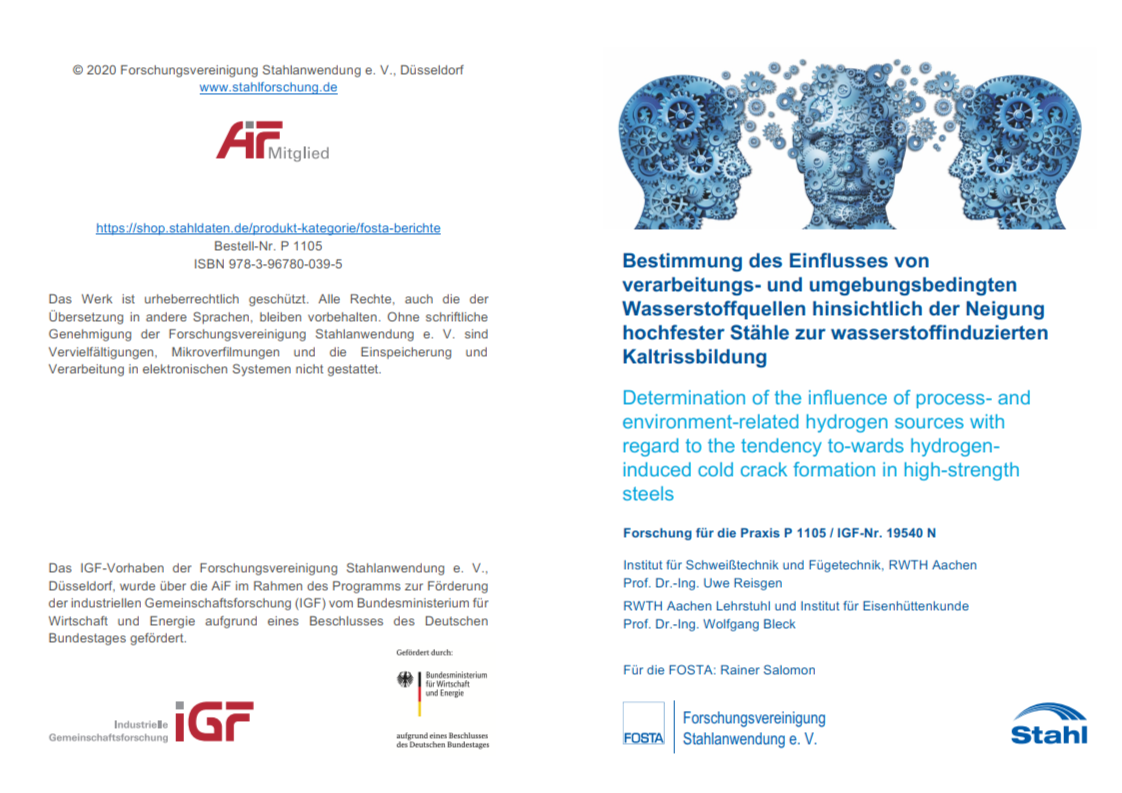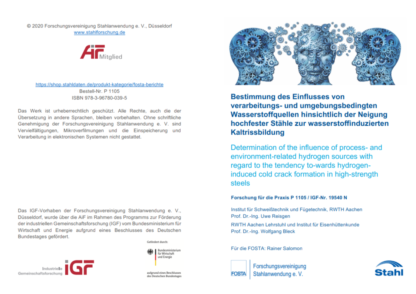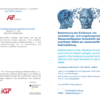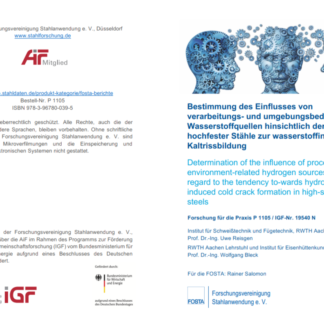Description
P 1105 – Determination of the influence of process- and environment-related hydrogen sources with regard to the tendency to-wards hydrogeninduced cold crack formation in high-strength steels
A challenge during welding of high-strength fine-grained structural steels is the risk of hydrogen-induced cold cracking (HIC). There is a general agreement that the occurrence of HIC is particularly likely at a critical combination of hydrogen content, hardening microstructure and stress state. The influence of individual process parameters on hydrogen absorbtion during welding has already been investigated in the past. However, the different process boundary conditions, such as those that occur during construction site production, were often not taken into account, so that the risk of cold cracking is hardly predictable in practice. Within the framework of this project, different high-strength fine-grained structural steels (primarily structural steel S690QL and pipeline structural steel L555MB or X80) are therefore being investigated regarding their sensitivity to hydrogen (embrittlement, cracking) in combination with the welding processes GMAW and SAW, whereby the processing conditions are specifically varied and taken into account. The combination of all results achieved in the project should serve as a basis for an estimation of the material and process specific cold cracking tendency. The experimental test series are supported by numerical simulation approaches.
For both welding processes, dependencies of the welding processing and ambient conditions, e.g. by variation of the welding parameters or targeted manipulation of the potential hydrogen input, on the resulting hydrogen contents in the weld metal could be worked out and quantified. Using the findings, joint welds are produced on sheets of the high-strength test materials. No cold cracks are detected under controlled conditions due to the consistently high heat content during welding in multi-layer technology and the resulting hydrogen effusion in the area of the welding zone.
On the basis of slow strain rate tests (SSRT), significant hydrogen-related influences can be detected. Here, specimens are taken from the unaffected base materials and from joint welds (GMAW and SAW) at various positions and tested. In particular, an additional galvanostatic hydrogen charging during SSRT leads to a considerable loss of elongation due to hydrogen embrittlement, whereby specific differences result here depending on the materials, the welding processing conditions and the sampling position. By carrying out self-stressing cold crack tests (Tekken), the tendency to cold cracking can also be qualitatively estimated as a function of the selected preheating temperature and the energy per unit length in order to be able to narrow the welding processing window more closely.
Published in:
2020
Authors:
R. Sharma M.Sc., Dr.-Ing. Ch. Haase




